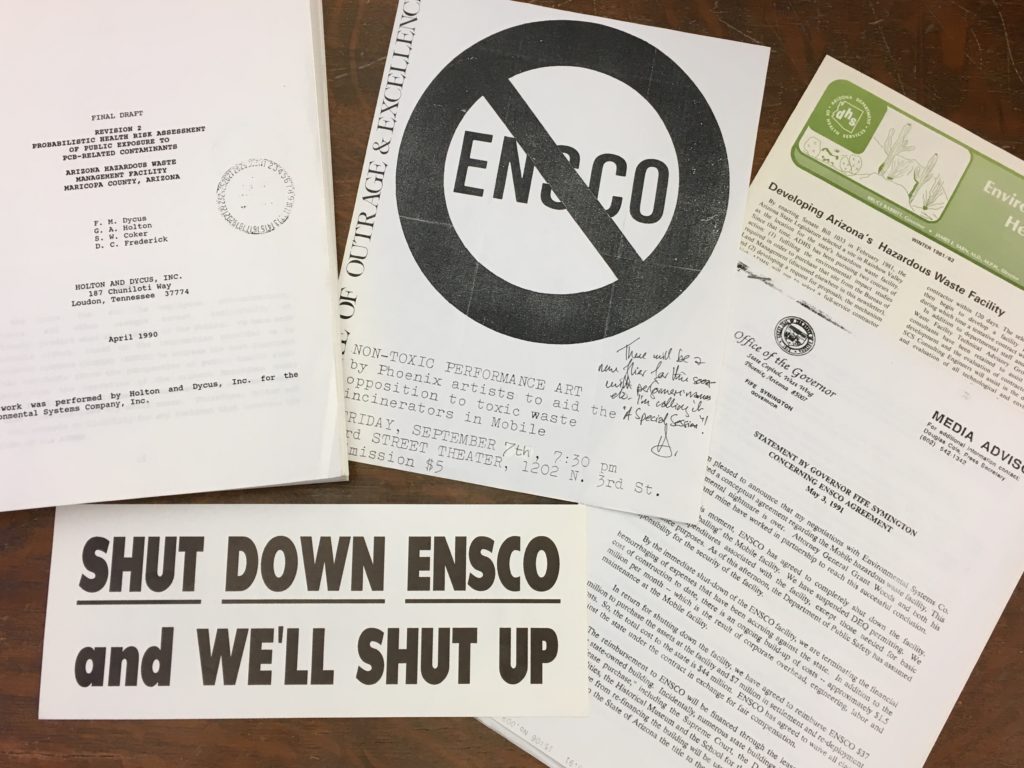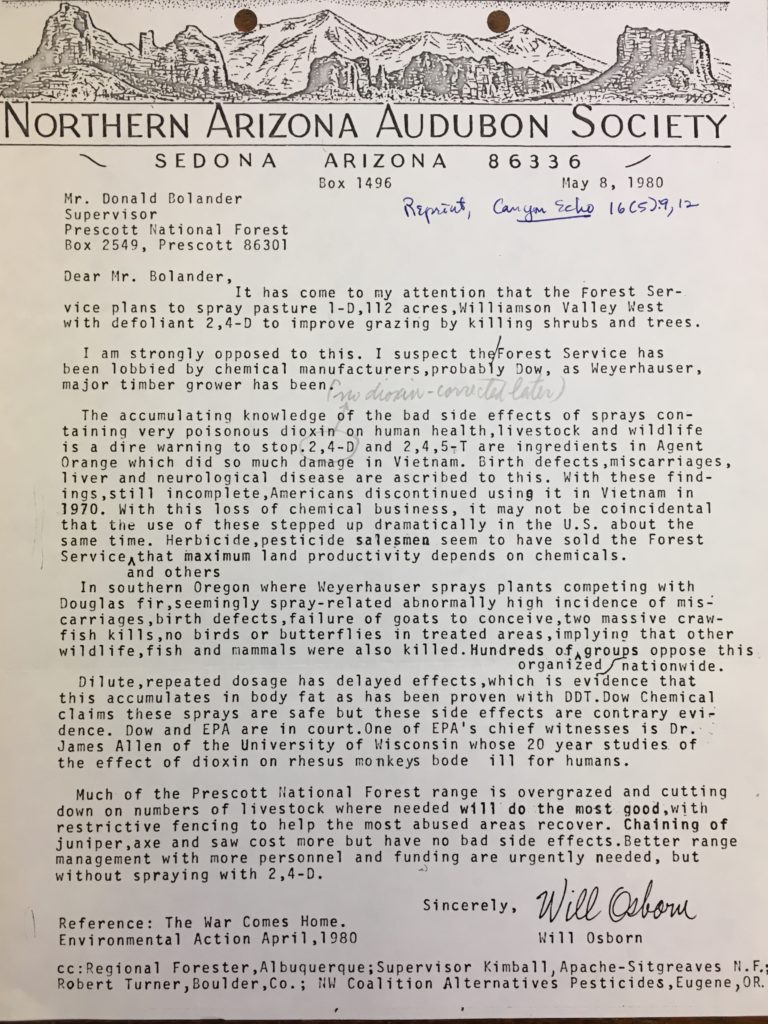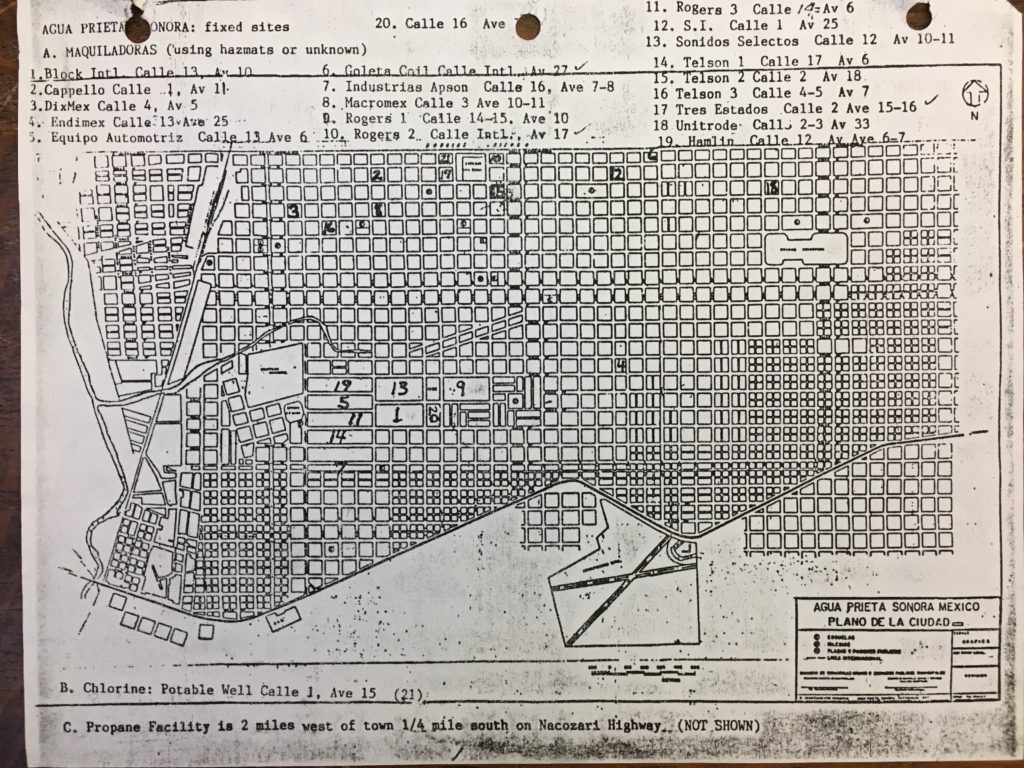Environmentalists make terrible neighbors, but great ancestors. – David Brower
It would be difficult not to notice a common thread of diligent, dogged persistence across the broad spectrum of environmental justice activism. This tenacity, coupled with a long view of the world and a whole lot of hard work, is what makes for some of the most successful environmental justice campaigns.
While success cannot be measured in one brief moment or win where environmental issues are concerned, each victory adds to the larger picture of global environmental awareness and health of the planet. Multiple stories of such environmental justice grit can be found in the collections at The Bancroft Library and one collection in particular is the newly opened records of Arizona Toxics Information.
Focused primarily on environmental concerns in the Arizona/Mexico border region during the 1970s through 1990s, Arizona Toxics Information was founded by conservationist Michael Gregory in 1990. The collection also includes materials collected by Gregory before Arizona Toxics Information was established when he worked with the Sierra Club Grand Canyon Chapter and grassroots environmental groups. Gregory had been employed by the United States Forest Service in the early 1970s and had witnessed the spraying of herbicide 2,4,5-T in national forests while he was stationed at fire outlook towers. 2,4,5-T is one of the main components of Agent Orange, which had already been banned for use in Vietnam due to its known harmful health effects and birth defects. From there, Gregory set about to research, collect information, write articles and lobby to end the practice of herbicide, pesticide and insecticide spraying in national forests and range lands.
In addition to the fight for pesticide use awareness and regulations, Arizona Toxics also ran several successful campaigns to shut down the Phelps-Dodge Corporation’s Douglas Reduction Works (copper smelter), the ENSCO hazardous waste management facility (PCB incinerator), and to improve the overall air and water quality of Arizona. As the Environmental Protection Agency’s Integrated Environmental Plan for the U.S.-Mexico Border Area and the North American Free Trade Agreement (NAFTA) were being drafted in the early 1990s, Arizona Toxics Information lobbied and organized grassroots groups on both sides of the border to share information and rally for a multitude of environmental commitments in the agreements. These commitments included providing the public the “right-to-know” about pollutants being released from factories on both sides of the United States-Mexico border, regulating maquiladoras (factories in Mexico that are generally owned and operated by foreign companies which assemble products often to be exported back to the country of that company), and developing emergency disaster plans to respond to hazardous waste accidents.
The current status of NAFTA casts some doubt on the future of these agreements. The opening of the records of Arizona Toxics Information provides timely documentation of hard-won environmental justice victories on the US-Mexico border.
The processing of the Arizona Toxics Information records is part of a two-year NHPRC-funded project to process a range of archival collections relating to environmental movements in the West. A leading repository in documenting U.S. environmental movements, The Bancroft Library is home to the records of many significant environmental organizations and the papers of a range of environmental activists.


